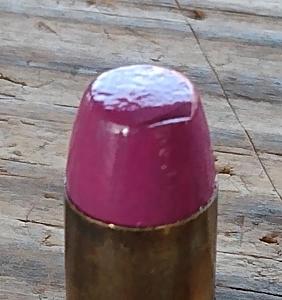I always wondered why you guys made such a fuss about alloy hardness. I have a stash of lino that I use for long-range rifle. But for everything else, mostly handgun, I just throw whatever into the pot and cast away.
My last lead score was a bunch of back stop lead. It was probably, mostly 22 rf lead.
Using this lead, I started getting FTF's in my 380. I could even feel a sensation as the boolits fed from magazine to chamber during the firing process.
Then I started looking at some of the failures. This was a boolit that crammed into the feed ramp and stuck there. You can see a divot on the nose. I even noticed a flat spot on some of the rounds that successfully fed into the chamber. I checked them during the firing cycle by ejecting them before pulling the trigger.
Looks like I'm going to have to add some tin to this alloy if it is going to be used for semi-auto rounds.


|
   
   
|


|



 Reply With Quote
Reply With Quote















